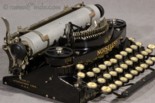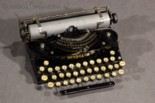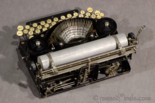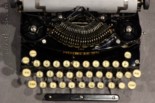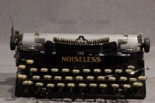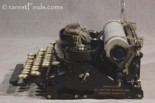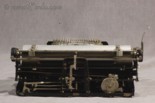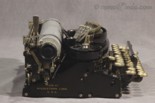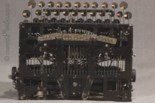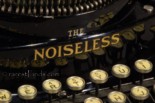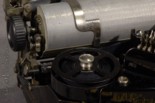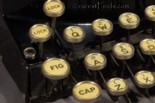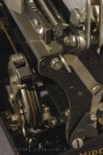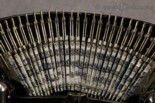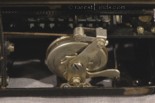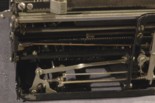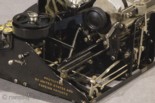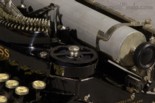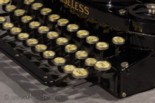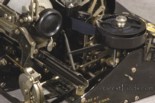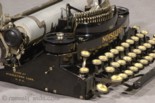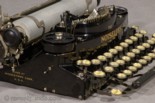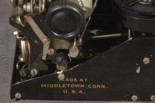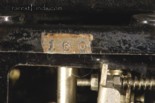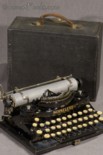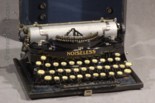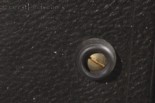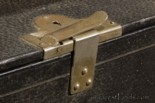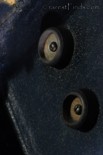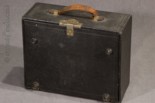Very early Noiseless Portable Typewriter with serial # 160 in very nice condition and all original!
For your consideration, I can offer a very fine and rare early Noiseless Portable Typewriter. This machine has a three bank keyboard with double shift keys; one for capital letters, and the other for Figures. Both shift keys also have a lock key. There is also a margin release key and a back space key. Everything works as intended and is original (other then the rubber grommets which have been replaced. The space bar folds up for so the machine fits in its case, see picture 8. The machine here offered is slightly different then the later machines; it does not have a paper support braket (there are also no holes to attach one, hence it is not missing!). The sides of the carriage are nickel plated on later machines.
Condition:
This machine, considering its age, is in remarkable fine condition. There is no oxidation. Nickel plated parts are still shiny. The four rubber feet have been replaced with new ones machined according to measurements of the old feet (rubber cooled with liquid nitrogen so it could be machined on a lathe) see picture 27. No effort was spared to keep everything original. The same goes for the four rubber grommets inside the lid of the case to keep the machine in place, see picture 29.
All the decals are perfect and original. That goes for the paint too (very tiny spots have been touched-up which is not noticeable. The dried out inking ribbon has not been replaced as the ink, over long time, is a source for oxidation. If the buyer intends to use this machine to type, it will be easy to replace the ribbon (I can give the potential buyer contact information where to get a fresh ribbon.)
History:
If you are familiar with the Wellington and Franklin typewriters, they have something in common with this Gem, they are all inventions of Wellington Parker Kidder of Jamaica Plain, Massachusetts. Kidder was issued patent #630'060 on August 1, 1899 for his noiseless typewriter with the title "TYPE WRITING MACHINE." The reduction in noise and an the even imprint on the paper this machine acchieves, was accomplished by the "pressure print theory." This technique also alleviated the need for a rubber roller as the types would only leave imprints on the paper with the same pressure, regardless of how hard the typist would press the keys! Hence, an aluminum cylinder was adequate to serve as a roller as the types never even touch the roller hard. The paper is all that is needed between the typew and the roller. The machine was refined over the next 21 years (1899-1921) and the following US patents were also issued; 981'657, 1'013'084, 1'046'205, 1'046'229, 1'049'767, and 1'049'768.
Noiseless Portables were only manufactured in small numbers. In the first year of production 200 machines were manufactured, including the machine offered here, which has the serial number 160, see picture 23. The serial number 160 is the second lowest serial-number known, there is also a machine known with the serial number 92, see site.xavier.edu.. The Noiseless Portable was sold for $65.00 in 1921. According to the website typewriterdatabase.com, a total of 6'500 machines were manufactured before the company was sold to Remigton in 1924..
Inventory Number 01002;
Price: Sold!
>
